|
BULB LOG 45 --- 5th November 08
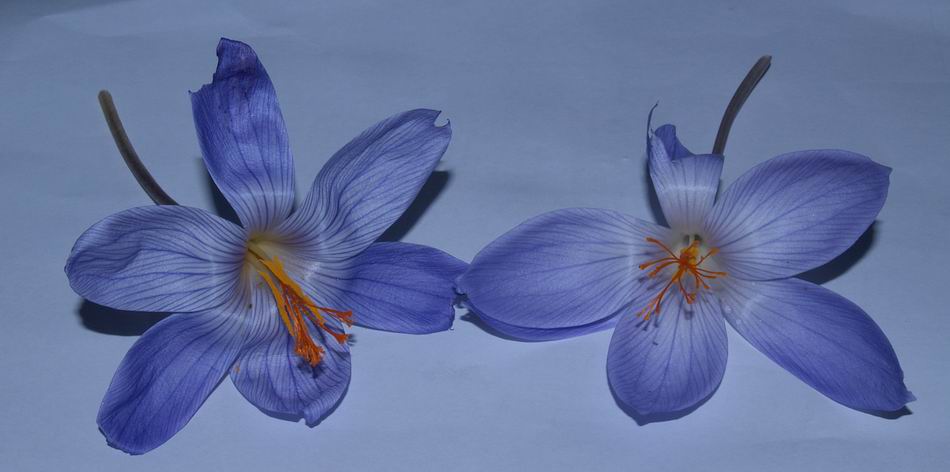
Crocus speciosus flowers
Janis Ruksans has suggested that the Crocus speciosus 'Oxonian' I showed a few weeks ago is not true to name - Janis states that Oxonian is the darkest form of speciosus and its flower tube is solid purple, too; not lightly spreckled purple like in my picture. Janis remembers this variety well from the time he wrote his monograph on crocuses which unfortunately was only published in Lativian - not surprisingly all 40,000 copies sold out very quickly. Janis got Oxonian from the Van Tubergen company which in those days was owned by the late Michael Hoog who personally worked on the rarities and correct naming of the stocks. Janis also tells me that Oxonian looks very similar to Crocus 'Aino' distributed by Antoine Hoog. Unfortunately in this modern age it is very difficult for commercial growers to keep such rigorous check on stocks, so often the wrong names are applied or stocks simply get mixed up. In the picture above, the flower on the left is the one I got some ten years or so ago as C. 'Oxonian' and the
one on the right as C. 'Conqueror' and they probably represent what was available in the trade at that time rather than being the crocus originally given those names. While on the subject of naming I apologise for misnaming Crocus caspius as C. cyprius in Log 43 - it is not that I do not know the difference between the autumn flowering C. caspius and the spring flowering C. cyprius. It was one of those moments when my brain retrieved the wrong name from my memory cells - search for a crocus with a specific name that begins with 'c' and has a geographical reference. Some say this is a senior moment and as I am fast approaching 58 it could be but I have been making slips like that all my life. Again all this just shows how difficult it is for growers to keep their stocks correctly named in the long term what with simple memory moments like this as well as contamination of stock with seedlings or cormlets : remember the pot I showed in bulb log 43 labelled Crocus biflorus isauricus with both C. pulchellus and ko
tschyanus flowering in it - need I say more ?
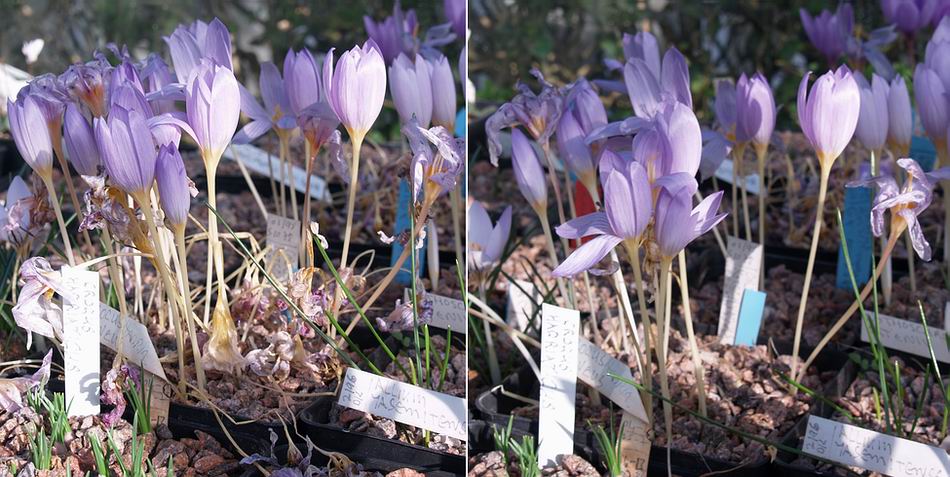
Removing dead flowers Crocus kotschyanus
On a practical note; remember to remove the dead flowers from your crocus. In the right hand picture you will see I have removed the spent flowers now they have collapsed - if you do not remove them they are likely to become infected with mould which can spread to the leaves and corm.
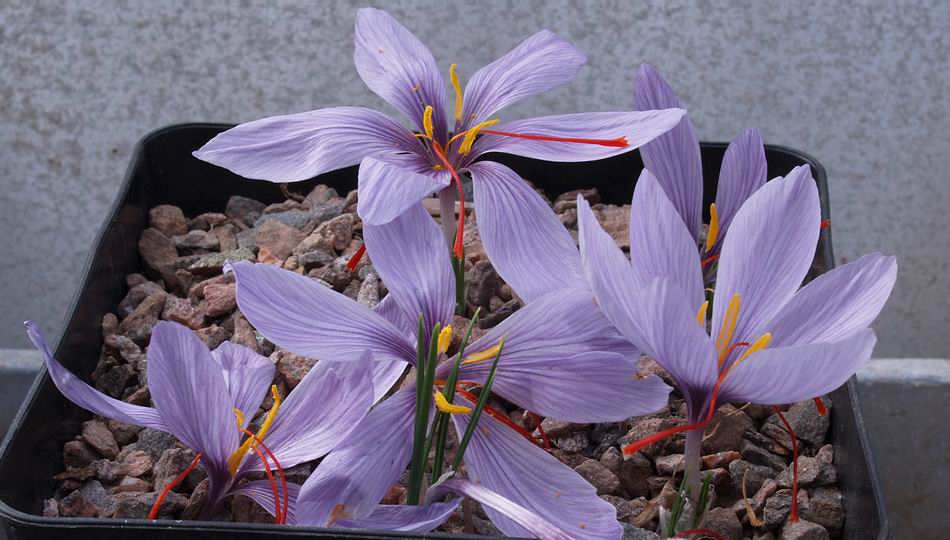
Crocus sativus
The troublesome saffron Crocus sativus has managed to put on a few flowers for us this year but it is never easy to flower in our colder region - planting it very deep does produce large corms that are more likely to flower.
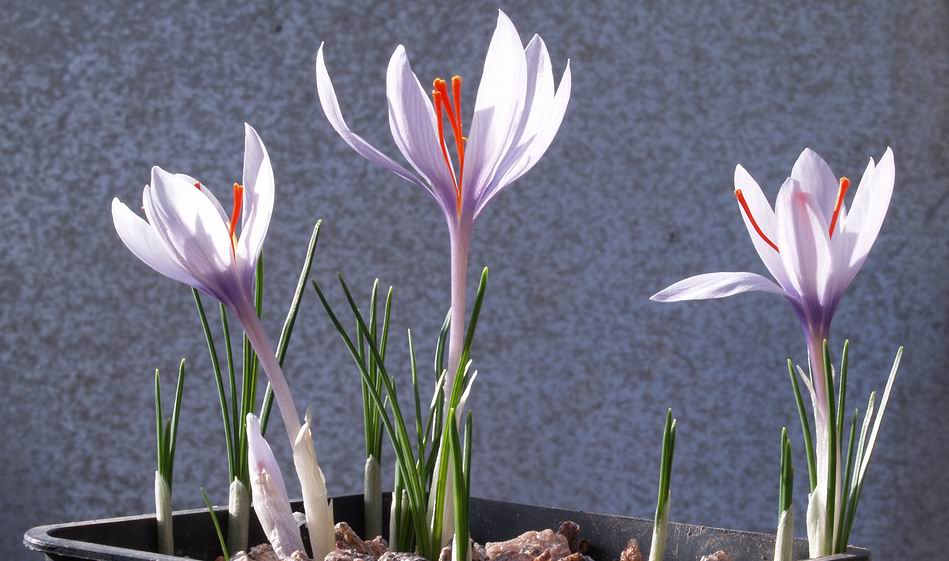
Crocus cartwrightianus
I have more success with Crocus cartwrightianus - it is thought that C. sativus is an extreme form of C. cartwrightianus that has been increased vegetatively and cultivated for thousands of years.
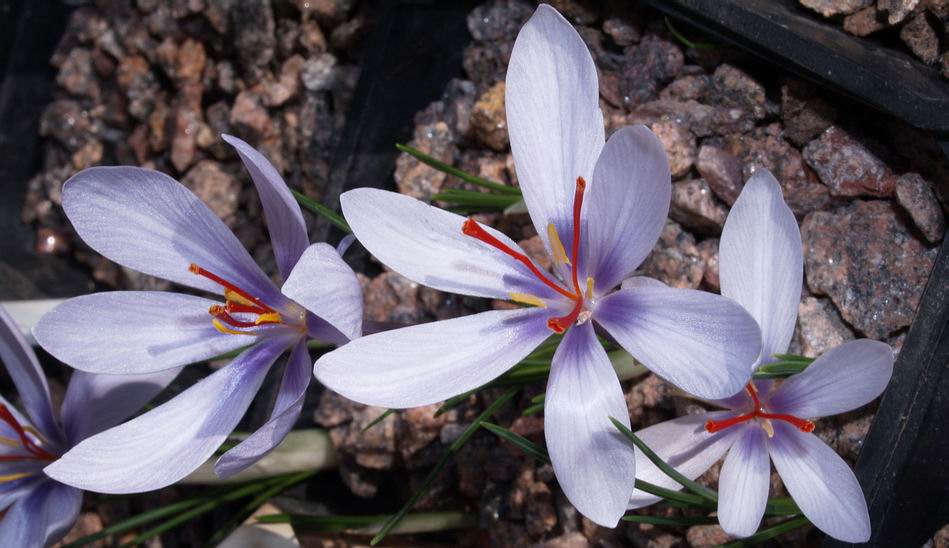
Crocus cartwrightianus flower
Crocus cartwrightianus has a style that branches low down near the throat but the branches are not as long as those of the saffron crocus.
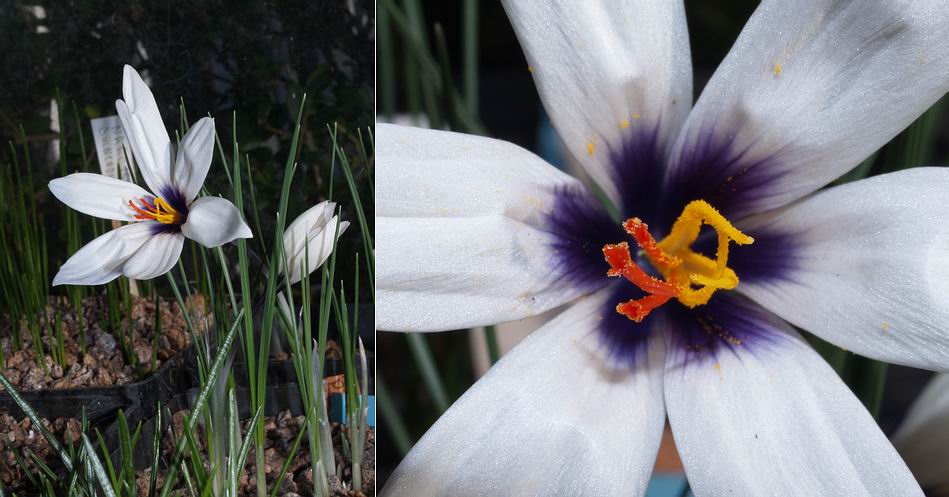
Crocus mathewii
Only two flowers so far on our Crocus mathewii as we had a bad year of growth two springs ago and this species is taking longer to recover. The plus side is that due being kept warmer and drier than it would prefer each corm broke down into a number of small corms so I have many more corms than before which with one more good season of growth should flower well next year. This feature of breaking down into lots of small bulbs when under stress is shared by many types of bulbs and can be used to speed up the rate of increase in bulbs that are otherwise reluctant to increase.
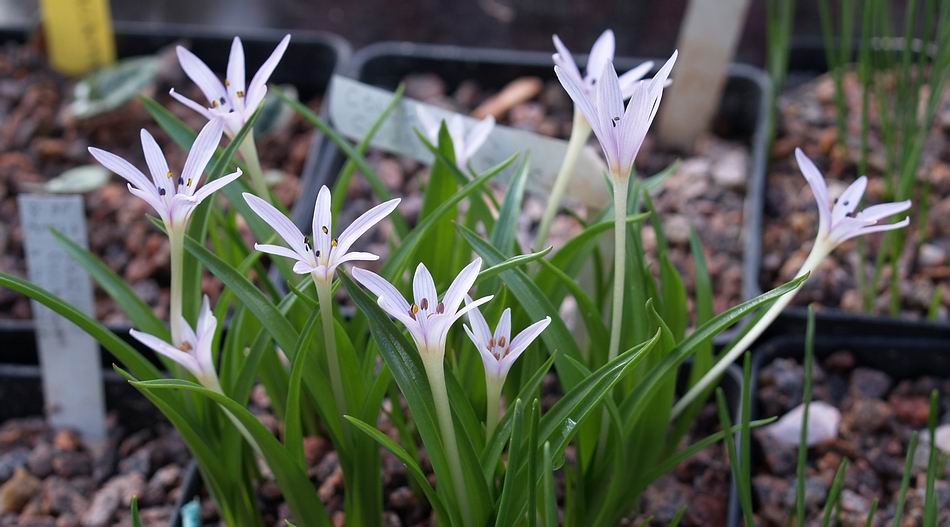
Colchicum coustourierii
Just to show that it is not all crocus that are in flower just now here is Colchicum coustourierii which is very close to C. cupanii.
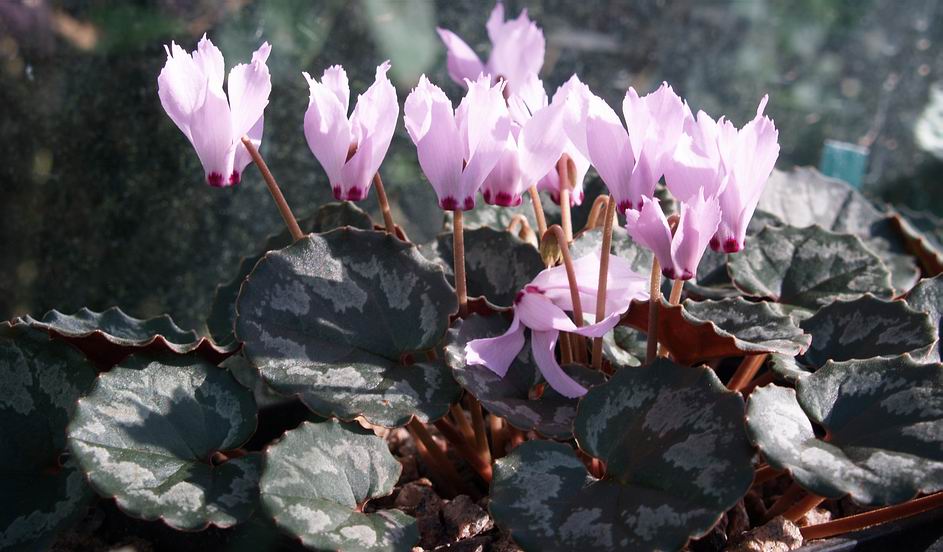
Cyclamen mirabile
Also a later flowering form of my favourite Cyclamen mirabile.
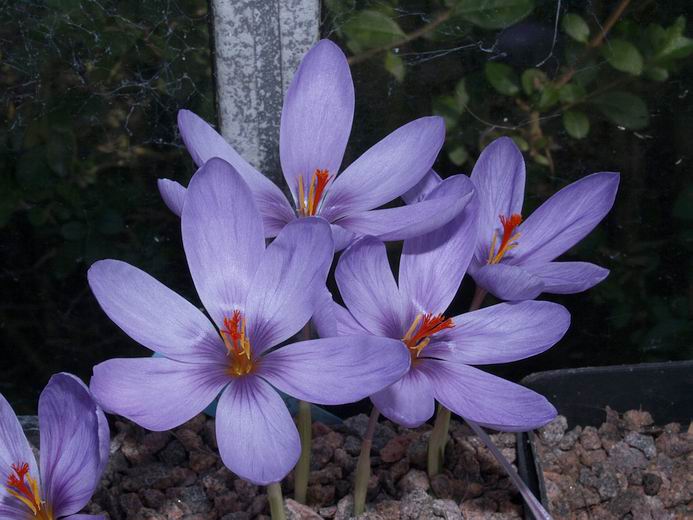
Crocus medius
I showed Crocus medius in the garden a few logs back and now some in a pot are in flower. There has been some question as to whether this species has got a virus as you can see varying degrees of darker colours shooting through the floral segments but I am not sure as this plant shows no other symptoms of being infected but I do proceed
with caution.
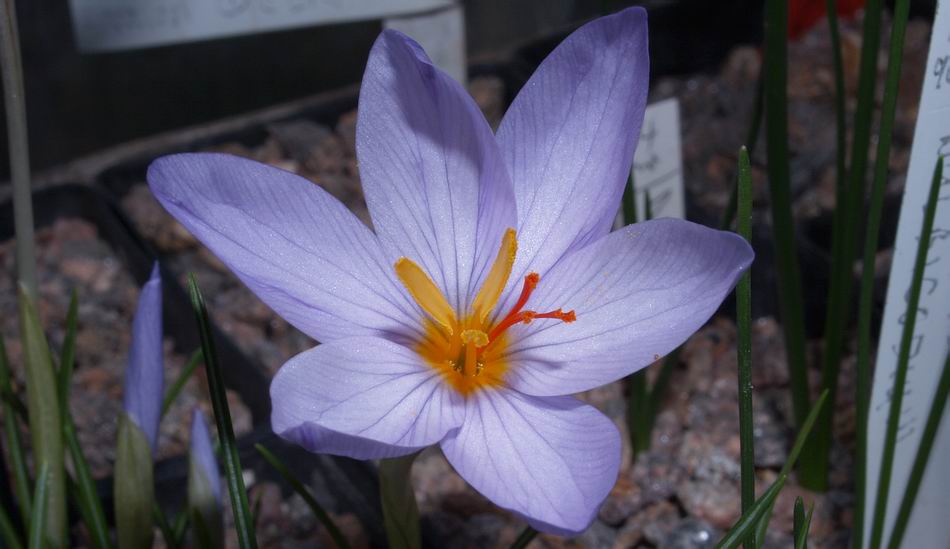
Crocus longiflorus
In the same section as C. medius is Crocus longiflorus which I think is a very elegant plant, flowering with some leaf showing.
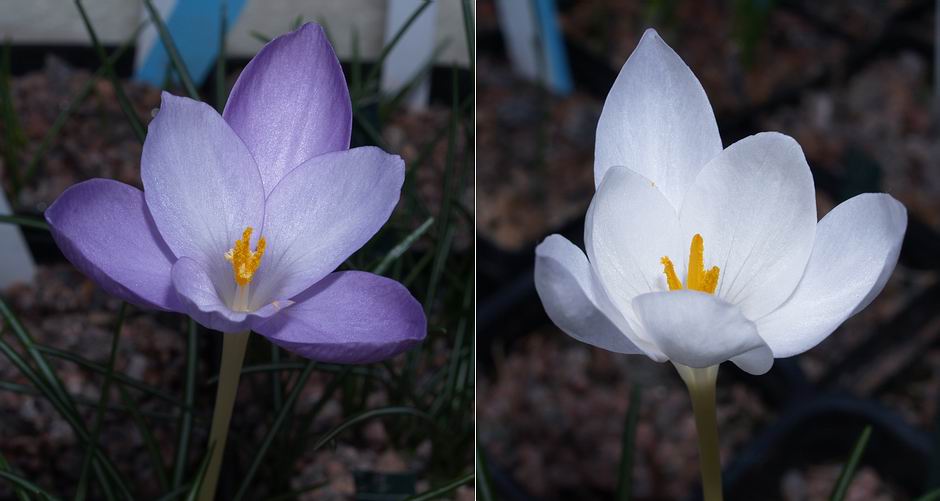
Crocus goulmyii
As it flowers that bit later I like to keep Crocus goulmyii under cold glass so we can enjoy the flowers with out them being hit by the ravages of the weather.
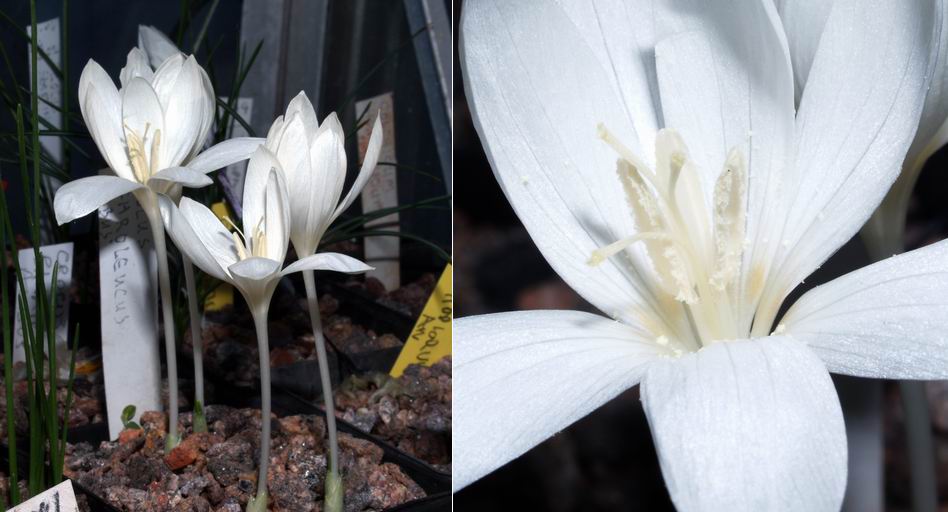
Crocus ochroleucus albus
Crocus ochroleucus normally has a yellow throat but some years ago we were given this nice form which has a white throat.
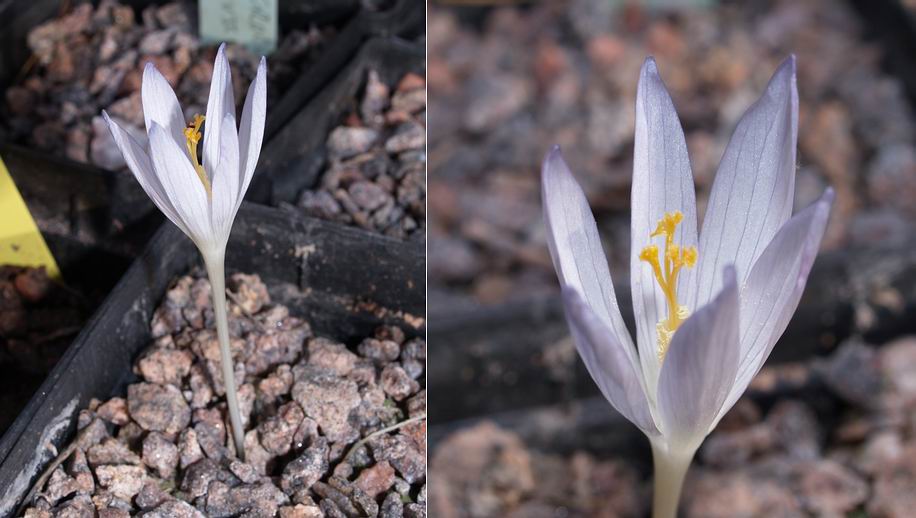
Crocus gilanicus
Related to the above, or at least from the same series, Kotschyani, is the small flowered Crocus gilanicus. It has been quite rare in cultivation possibly because it is not the showiest of species but it is still a must for any serious Croconut.
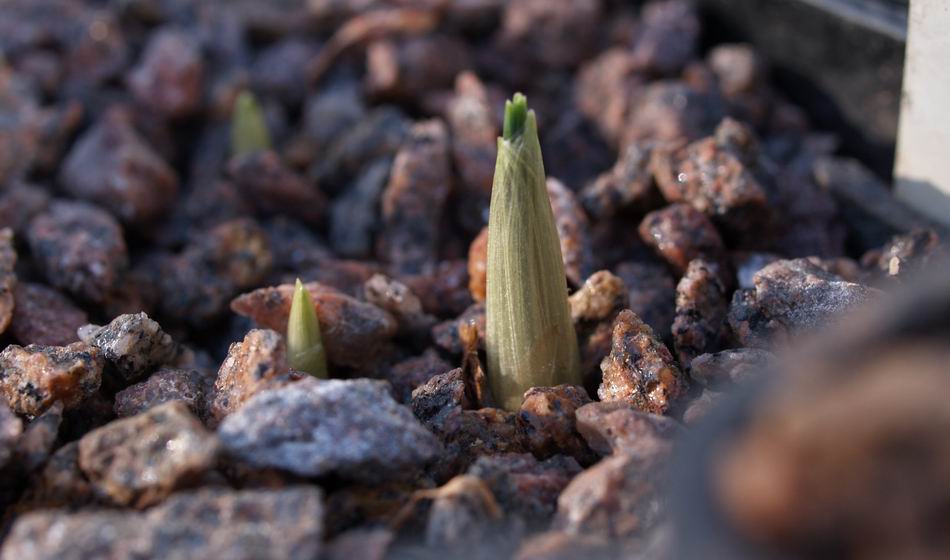
Crocus michelsonii
Talking of rare beauties before the autumn species have even stopped flowering the spring or should that be late winter flowering Crocus michelsonii has buds that are already through the gravel top dressing.
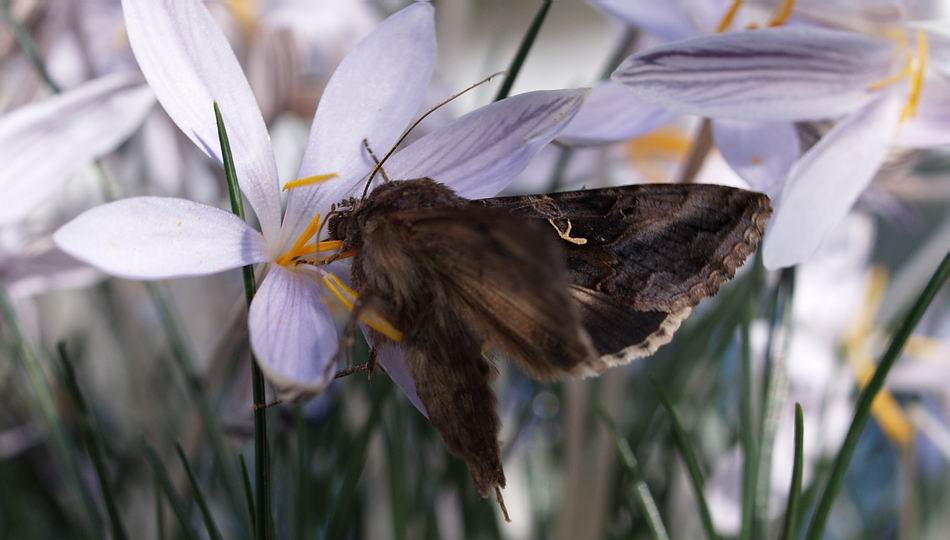
Moth pollinating Crocus cambessedessii
I watched with fascination this unlikely match of a large moth pollinating the tiny flowers of Crocus cambessedessii - every time it landed the flower was bent down to the ground.
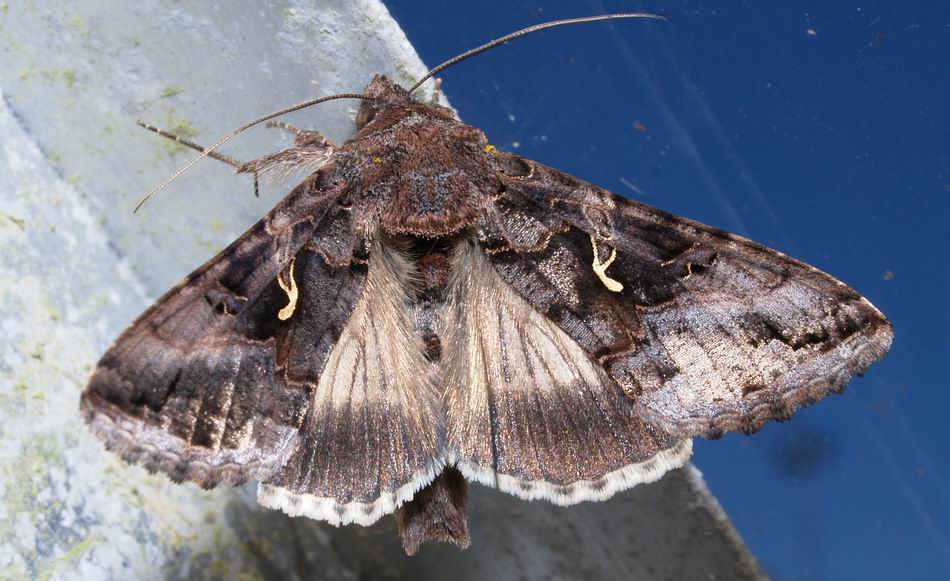
Moth
It eventually got fed up falling off the flowers and settled on the glasshouse roof where I cold get a decent picture of it.

Winged aphid
I am not so keen to see all insects in the bulb house and I was quick to deal with this winged aphid that I spotted on a Narcissus leaf. A timely warning to always be on the alert for these creatures: even when it has been cold, with a lot of frost, as soon as a mild sunny day appears so do they. A quick wipe dealt with this one and I will be keeping a very careful watch for any more and if I think it necessary I will use a systemic insecticide to prevent any infestation.
^ back to the top ^
|

